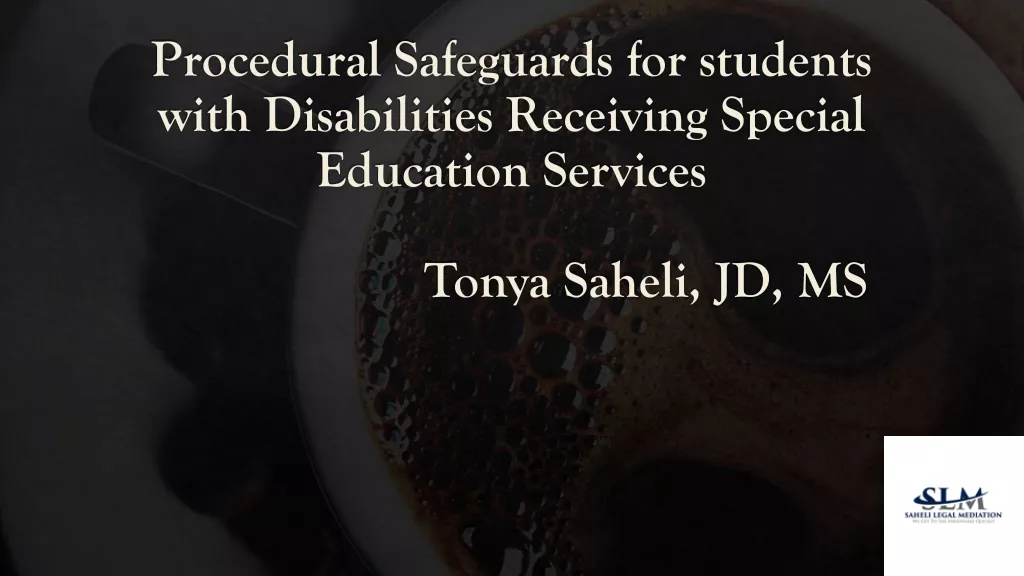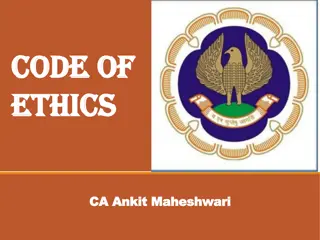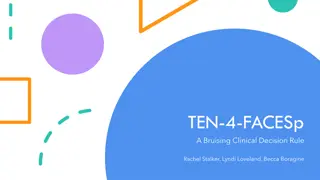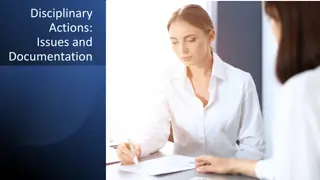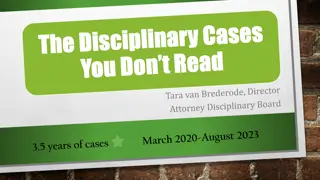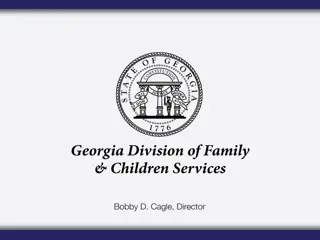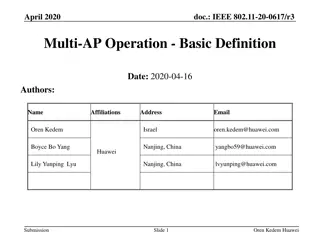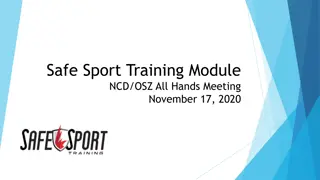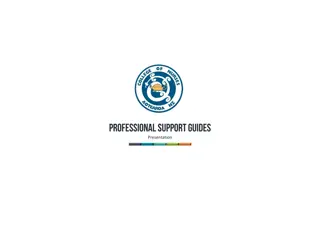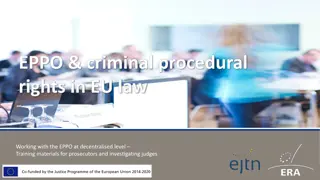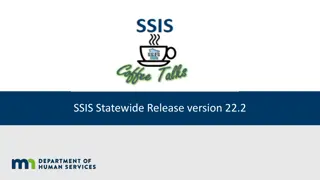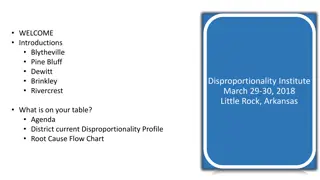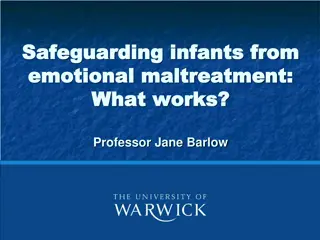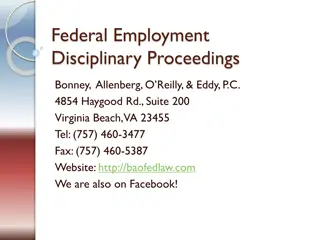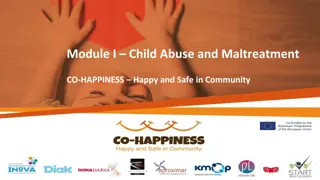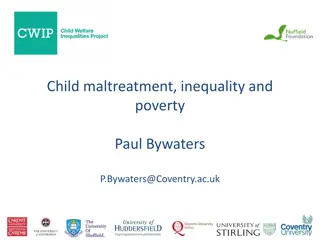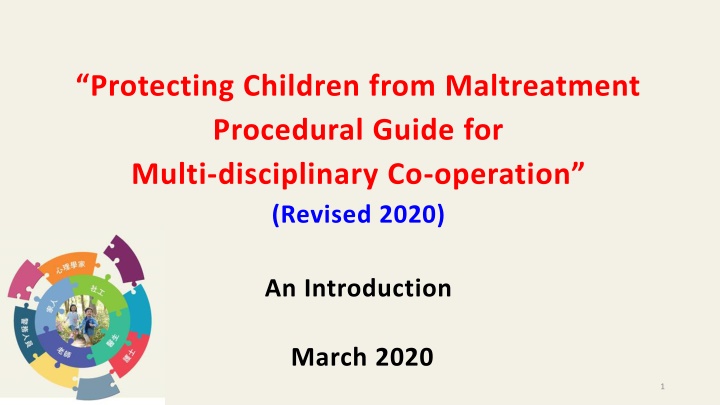
Comprehensive Guide for Child Maltreatment Prevention and Response
Discover the detailed procedural guide focusing on child maltreatment prevention and response. Learn how multi-disciplinary cooperation ensures child safety and protection. Review the methods, schedule, and purposes outlined in this comprehensive guide.
Download Presentation

Please find below an Image/Link to download the presentation.
The content on the website is provided AS IS for your information and personal use only. It may not be sold, licensed, or shared on other websites without obtaining consent from the author. If you encounter any issues during the download, it is possible that the publisher has removed the file from their server.
You are allowed to download the files provided on this website for personal or commercial use, subject to the condition that they are used lawfully. All files are the property of their respective owners.
The content on the website is provided AS IS for your information and personal use only. It may not be sold, licensed, or shared on other websites without obtaining consent from the author.
E N D
Presentation Transcript
Protecting Children from Maltreatment Procedural Guide for Multi-disciplinary Co-operation (Revised 2020) An Introduction March 2020 1
Review of Procedural Guide for Handling Child Abuse Cases 2
Purposes of the Review 1. To achieve a more consistent view on the definition and scope of child maltreatment among various disciplines 2. To provide references for frontline personnel so as to facilitate their identification of families with higher risk of child maltreatment 3. To provide a clearer guide for frontline personnel in handling and following up on different types of suspected child maltreatment and protecting children already being harmed/maltreated 4. To enhance the co-operation among the child concerned, family and professionals in order to formulate and implement the follow-up plan 5. To define the roles and responsibilities of different disciplines in facilitating/enhancing their co-operation. 3
Review of Procedural Guide for Handling Child Abuse Cases Discussed by Committee on Child Abuse in the meeting held in October 2016 Formed a task group in end-2016 Task Group Members - Representatives from Headquarters and frontline service units of the Social Welfare Department (SWD) - Labour and Welfare Bureau, Hong Kong Police Force, Education Bureau, Department of Health - Hospital Authority (HA) - Representatives from the Hong Kong Council of Social Services and NGOs under different service settings 4
Methods of Review Task Group The whole Procedural Guide Role of Education personnel Handling Approaches/ Definition Identification /Risk Assessment Child Protection Plan Parents abusing drugs Investi- gation Focus Groups Different Departments/ Organisations Consultation Review individual topic/scope Committee on Child Abuse Review and give feedback half yearly 5
Schedule of Review 20 December 2019 1 April 2020 6 months after implementation Jan to March 2020 Full imple- mentation Continue conducting training Initial review of imple- mentation by Committee on Child Abuse Discussed and endorsed by Committee on Child Abuse Upload the revised Procedural Guide to the SWD Homepage Conduct briefing and training Production of leaflets 6
Major Amendments References have been made to the Declaration of the Rights of the Child and Convention on the Rights of the Child of the United Nations in drawing up the handling procedures and points to note in the Guide 7
Protecting Children from Maltreatment Procedural Guide for Multi-disciplinary Co-operation With co-ordination of Social Welfare Department, Hong Kong Special Administrative Region, drawn up jointly by Labour and Welfare Bureau Education Bureau Department of Health Hong Kong Police Force Hospital Authority The Hong Kong Council of Social Service and Non-governmental Social Service Organisations 10
Guide to the Guide Glossary Chapter 1 Chapter 2 Chapter 3 (please read first) Aim, Beliefs and Principles Definition and Types of Child Maltreatment Procedures of Multi-disciplinary Co-operation in Handling Suspected Child Maltreatment/Child Protection Cases Case Identification, Initial Handling and Reporting Initial Assessment Immediate Child Protection Actions Risk Assessment and Decision Making on Protecting the Safety of Children Child Protection Investigation Medical Examination Criminal Investigation Multi-disciplinary Case Conference on Protection of Child with Suspected Maltreatment Follow-up Services on Child Protection Cases Handling of Child Maltreatment Allegations against Staff, Carers and Volunteers of Organisations Table of Content Chapter 4 Chapter 5 Chapter 6 Chapter 7 Chapter 8 Chapter 9 Chapter 10 Chapter 11 Chapter 12 Chapter 13 11
Content Roles of personnel from various sectors (Annex 4 to 10) Related Ordinances Personal Data (Privacy) Ordinance (Annex 2) Ordinances on Criminal Offences (Annex 3) Ordinances on Child Protection Work (Annex 15) Child Protection Registry (Annex 14) Reference Materials Families with Higher Possibility of Child Maltreatment (Annex 1) Handling Skills and Points to Note (Annex 11-13) Assessment Matrixes (Annex 16-18) Reference Kit for Chairperson of MDCC (Annex 19) Related Support Services Witness Support Service (Annex 20) Counselling/Therapeutic Treatment before Court Hearing and after Maltreatment (Annex 21) 12
AIM, BELIEFS AND PRINCIPLES (Chapter 1) (must read first) 13
To effectively protect the children, multi- disciplinary collaboration model should be adopted Collaborate in partnership based on Working Together and Trusting Each Other Achieve Protecting the Vulnerable and For the Welfare of Children . the common goal of 14
Safeguard the best interests of child 15
Strategies to Safeguard Childrens Safety 3. Manage the Crisis Protect the Child 2. Early Identification Support the Family 1. Take Appropriate Measures Prevent the Problem 16
Various Sectors should continue strengthening the Second Level Strategy Families with higher possibility of child maltreatment Early identification Support the Families (Annex 1) Prevention of child maltreatment 17
Aims for Multi-disciplinary Co-operation in Child Protection (The Third Level) to handle the current crisis and safeguard the physical and psychological safety of the child concerned to reduce or eradicate the potential risk of harm to the child concerned in the future to enhance the family s functions and their capability in childcare and parenting, and strengthen its support network so that it can assume full responsibility in child protection 18
Principles of Child Protection Work Child-focused, Safety First Family Participation Multi-disciplinary Co-operation 19
Child-focused, Safety First Family Participation Child s best interests should take precedence over the rights of parents and the criminal prosecution of the alleged perpetrator Holistic consideration should be made on factors of the child s family situation, sex, age, developmental stage, race, culture and religion, etc. In assessing the risk of further harm and formulating safety and follow-up plans of the child, opinions of the child and his/her family should be heard and taken seriously 20
Child-focused, Safety First Family Participation To use languages and methods intelligible and comprehensible to the child and his/her family members Child s feelings and impacts on the child resulting from the actions taken should be taken into account Minimum intervention should be made so as to avoid unnecessary disturbances caused to the child and his/her family members Resources and support network of the family should be leveraged where feasible and safe so that the child can be taken care of by family members/relatives. If residential child care service is required, a long-term and stable care plan for the child should be formulated as soon as possible 21
Multi-disciplinary Co-operation Safety and best interests of a child are of paramount concerns. While different views may be hold on the way a case should be handled, consensus should be reached as far as practicable Should obtain prescribed consent of the data subject as early as possible for providing the personal information obtained to other personnel in discussion on the handling approaches 22
Multi-disciplinary Co-operation If prescribed consent is not obtained but for protection of a child possibly be harmed/maltreated, consideration of invoking special provisions of exemption at Part VIII of the Personal Data (Privacy) Ordinance, Cap 486, should be made on the use, disclosure or transfer of the data for the case to be reported/referred to the relevant units for investigation or follow-up, or for information to be provided to other personnel for discussion on the case handling (Annex 2) Detection or prevention of crime, or the prevention, preclusion or remedying (including punishment) of unlawful or seriously improper conduct, dishonesty or malpractice under Section 58 Protection of data subject or any other individuals from serious physical and/or mental harm under Section 59 23
Definition of Child Maltreatment Broad sense remains unchanged Any act of commission or omission that endangers or impairs the physical/psychological health and development of an individual under the age of 18 Committed by individuals (singly or collectively) who, by their characteristics (e.g. age, status, knowledge, organisational form), are in a position of differential power that renders a child vulnerable 25
Purposes of Definition Prevent the Problem Protect the Child Support the Family 26
Definition of Child Maltreatment Scope of the Definition in the Guide The following individuals who, by their characteristics, are in a position of differential power to the child and commit/omit an act that endangers or impairs a child s physical/psychological health and development Those who are responsible for care or supervision of a child, or play a role in the care or supervision of the child owing to their statuses/identities parents/guardians persons entrusted with the care and supervision of the child (e.g. relatives, teachers, childminders, etc.) elders (e.g. relatives, elder siblings with relatively bigger age difference, close friends of the parents, etc.) In child sexual abuse case, also include other individuals who are in a position of differential power to the child. These individuals can be either adults or children 27
Definition of Child Maltreatment Emphasise that even a case is not defined as a child maltreatment, e.g. a child being bullied by peer/stranger, consensual sexual activities between an adolescent and his/her lover of similar age, woman abusing drugs during pregnancy, etc., approach of multi-disciplinary co- operation should be employed as far as practicable Welfare Meeting Case Meeting Pre-birth Conference 28
Terms relating to the Definition Present terms Suggested terms (suspected) abuser (alleged) perpetrator Physical abuse Physical harm/abuse Psychological abuse Psychological harm/abuse In explaining the captioned concern, may consider using the term harm instead of abuse as an approach that is relatively comprehensible to the children and their families 29
Physical Harm/Abuse Physical injury or suffering inflicted on a child by violent or other means (e.g. punching and kicking, striking with an object, poisoning, suffocation, burning, shaking an infant or Factitious Disorder Imposed on Another) where there is a definite knowledge, or a reasonable suspicion that the injury has been inflicted non- accidentally 30
Sexual Abuse Forcing or enticing a child to take part in any acts of sexual activity for sexual exploitation or abuse and the child does not consent to or fully understand or comprehend this sexual activity that occurs to him/her due to mental immaturity This sexual activity includes acts that have or do not have direct physical contact with children (e.g. rape, oral sex, procuring a child to masturbate others/expose his/her sexual organs or to pose in an obscene way/watch sexual activities of others, production of pornographic material, forcing a child to engage in prostitution, etc.) 31
Sexual Abuse Sexual abuse may be committed inside or outside the home or through social media on the internet by perpetrators acting individually or in an organised manner. It includes luring a child through rewards or other means for abuse, including sexual grooming which refers to designedly establish a relationship/an emotional connection with a child by various means for gaining his/her trust with an intent to sexually abuse him/her (e.g. communicating with a child through mobile phone or Internet) 32
Sexual Abuse Consensual sexual activities between an adolescent and another person may also involve sexual exploitation by a person whose characteristics are in a position of differential power to the adolescent. Cases where the adolescent is not mentally mature, too young (e.g. under the age of 13), or the sexual activity leads to sexually transmitted diseases or pregnancy may be considered and handled as suspected sexual abuse 33
Neglect A severe or repeated pattern of lack of attention to a child s basic needs that endangers or impairs the child s health or development Neglect may be caused by the following forms: 34
Neglect Physical neglect includes failure to provide necessary food/clothing/shelter, failure to prevent physical injury/suffering, lack of appropriate supervision, leaving a young child unattended, improper storage of dangerous drugs resulting in accidental ingestion by a child or allowing a child to stay in a drug-taking environment resulting in inhalation of the dangerous drugs by a child Drug/alcohol abuse during pregnancy can affect the health and development of an infant. If a pregnant woman fails to receive treatment for drug /alcohol abuse or make every effort to reduce her drug/alcohol use during pregnancy resulting in signs of poisoning (e.g. being tested positive for dangerous drugs or alcohol) of the newborn or withdrawal symptoms for dangerous drug or alcohol of the infant, these cases may be regarded and handled as suspected neglect 35
Neglect Medical neglect includes failure to provide necessary medical or mental health treatment to a child Educational neglect includes failure to provide education or ignoring the educational/training needs arising from a child s disability Emotional neglect will be put under the scope of psychological harm/abuse 36
Psychological Harm/Abuse A repeated pattern of behaviour and/or an interaction between carer and child, or an extreme incident that endanger(s) or impair(s) the child s physical and psychological health (including emotional, cognitive, social and physical development) Physical harm/abuse, sexual abuse or neglect often leaves a certain degree of mental or psychological impact on a child. However, reference should be made to the above definition when determining whether a case is psychological harm/abuse 37
These behaviours of harm/maltreatment may take the form of a repeated pattern, multiple incidents or a single but serious incident An individual case may involve more than one type of harm/maltreatment to the child should thoroughly assess the possibility of occurrence of various types of harm/maltreatment 38
In considering whether a case should be defined as child maltreatment, personnel should understand that: Primary consideration is the harm and the potential impact caused to the child s physical/psychological health and development by the behaviour rather than whether the individual commits/omits the behaviour with an intent to harm the child Not to blame the parent/carer concerned nor label the parent/carer/child negatively but to make the family concerned aware of the seriousness of the matter and to motivate them to co-operate with personnel in making use of their own strengths and resources to resolve the problems properly as soon as possible in order to ensure the physical and psychological safety of the child 39
Frequently Asked Questions relating to the Definition of Child Maltreatment (Appendix 1 to Chapter 2) Should not prematurely conclude or deny that an incident is suspected child maltreatment Conduct initial assessment first: whether the physical/psychological health and development of the child is endangered or impaired If not, support the family first Not a suspected child maltreatment incident: should handle with a multi-disciplinary approach as far as practicable 40
HANDLING PROCEDURES OF MULTI-DISCIPLINARY APPROACH (Chapter 3) 41
Identify if a child is possibly being maltreated Reporting, initial assessment and immediate child protection actions Child protection and other investigations Multi-disciplinary case conference Follow-up 42
Case Manager Model Personnel of various sectors Case manager Perform different roles at different stages according to his/her post, scopes and foci of the service he/she works at Take initiative in manager and other important observations or problems which need to be worked on and to discuss jointly the strategy intervention Roles of personnel of various sectors are set out in Annexes 4 to 10 Social worker responsible for child protection investigation/following-up child protection case revealing personnel to case the Co-ordinate various tasks, let the child interact with the case manager only for most of the time whenever situation allows in order to reduce the child s stress and trauma in repeating the abusive experience. and way of 43
IDENTIFICATION OF CHILD POSSIBLY BEING HARMED/MALTREATED (Chapter 4) 44
Physical/ behavioural/ emotional/ environmental indicator(s) identified Disclosure of the incident by other persons Disclosure of the incident by the child Initial handling Report to responsible unit Initial assessment 45
Possible Indicators of Child Maltreatment Physical/behavioural/emotional/environmental indicators may manifest singly or in combination Indicator(s) usually occur(s) repeatedly but also may appear only once Behavioural/emotional indicators are more subtle or concealed, which may be manifested by the child through drawings or plays, need to be more sensitive and observant to identify these indicators Should consider thoroughly if the child may have been harmed/maltreated by different types of harm/maltreatment instead of focusing on one single type Should seek advice from professionals of relevant sectors as early as possible if there is any doubt about the indicator(s) identified 46
Possible Indicators of Child Maltreatment Indicators are not exhaustive. Neither does the presence of a single or even several indicators points to the occurrence of child maltreatment. It however indicates that attention is required for the child. Personnel should first collect information, gain preliminary understanding and conduct assessment Should not prematurely conclude that an incident is suspected child maltreatment in order to prevent the child from experiencing unnecessary investigations, examinations or hospitalisation Should not exclude the possibility of a child being harmed/maltreated just because certain indicators are not listed Make reference to the Manual of Parenting Capacity Assessment Framework jointly developed by the Department of Health, the Hospital Authority and the Social Welfare Department for assessing the capacity of parents/carers in taking care of children aged between 0 and 3 (including assessment of relevant risk factors) 47
Possible Indicators of Child Maltreatment (newly added) Behavioural/emotional indicators related to different types of harm/maltreatment, such as: indicators on infants/pre-school children absence/withdrawal from school without reason or sudden loss of contact always in fear/excessive vigilance child disclosing that he/she has been forced into marriage by parents (e.g. children of ethnic minorities) those about the parents/carers, such as: repeatedly refusing others from approaching the child or forbidding the child to communicate with personnel directly (e.g. the child is always absent or asleep during scheduled visits by personnel and cannot be reached by relatives and family friends) forbidding the child to receive vaccination or health/medical follow-ups without sound reasons parent/carer not applying for birth certificate/identification documents for the child without sound reasons 49
Possible Indicators of Child Maltreatment (newly added) Related to physical harm/maltreatment, such as: the explanations of the causes/course of child s injury made by the parent/carer/child are unconvincing/contradictory or inconsistent with the injuries sustained excessive amount of clothes worn by the child to cover his/her body Related to sexual abuse, such as: child showing particular interest in body parts of adults or touching adults sensitive body parts repeatedly child with adequate self-care abilities disclosing that the carer often takes care of his/her personal hygiene/care matters (e.g. bathing, cleaning after toileting, changing clothes, etc.) child of an older age disclosing that his/her parent of the opposite sex often shares the same bed with him/her 50

